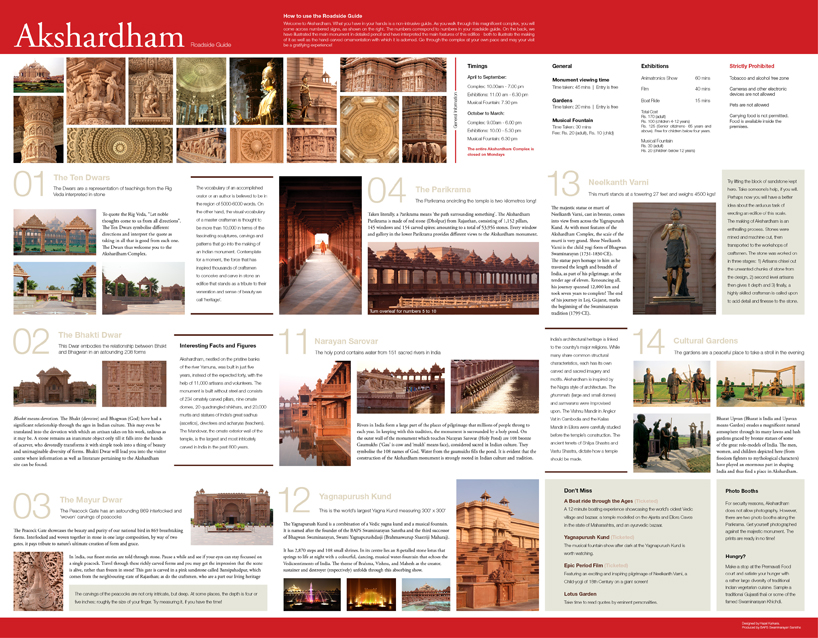
wayfinding project for akshardham delhi by Hazel Karkaria from india
designer's own words:
CLIENT: BAPS SWAMINARAYAN SANSTHA
WAYFINDING AND SIGNAGE FOR THE AKSHARDHAM MONUMENT, DELHI
One fifth of this country visits our heritage sites after traveling great distances with limited means. The signage at these sites, which is meant to play the role of a guide is not only terrible, but defiles and debases this inestimable heritage. Message and medium, are both ignored and an opportunity for interpretation through signage, lost. I realised that visual communication is about the message and choosing a medium that will enhance its impact.
My project for the Akshardham monument in Delhi started as a Diploma Project and with the client’s willingness to install my entire offering, I contined to work on it after I graduated. The idea was for Akshardham is to serve as a platform for other heritage sites. It aims to show through actual samples and prototypes that signage which guides, informs, entertains, pays respect to our heritage sites and is durable at the same time, is possible for an Indian context. What was important was the client’s willingness to contribute generously towards using a wide range of sign making techniques on a host of durable materials so that the Akshardham site could serve as an example for other heritage sites.
More than 50 sign samples, a designer-friendly Sign Manual with 30 materials, 14 signage techniques and 25 fact-sheets round off the project, all the while laying emphasis on durability with signs that are scratch-proof, vandal-proof and weather proof.
The final directional signs that were installed were not only durable, but also cost effective in their combination of material and technique. It stands at a good 8ft in height, made from ruby red granite. It is firmly planted, is vandal proof, weather proof and easy to maintain.
The visitor formed the centre of all research and testing- All of the signs are in two languages (English and Hindi) and are legible from afar. The choice of material and technique not only pays respect to the monument, but also provides information to the visitor in a crisp and concise manner. The challenge with an enormous site like this is not only to provide signage in terms of directional signs or wayside exhibits, but also to implement a whole wayfinding system into which its components fit seamlessly.
As part of the Wayfinding system at Akshardham in Delhi, we developed a non-intrusive means of interpretation- a Roadside Guide. As you walk through the vast complex, come across numbered signs. The numbers correspond to numbers in this roadside guide. On the back, we have illustrated the main monument in detailed pencil and have interpreted the main features of this edifice – both to illustrate the making of it as well as the hand-carved ornamentation with which it is adorned. It allows you to go through the complex at your own pace and choose the amount of information you wish to take in.
The Sign Manual contains all my explorations- mainly concentrated in the area of durable materials and techniques for signage (because this is an area where there are almost no available resources for an Indian context). Information about font selection, signage fixtures and other peripherals that surround wayfinding was also included in the Manual. This was conceived so that other firms/designers may take on similar projects that better interpret our heritage.
Roadside Guide 17″ x 22″ (front) for interpreting the Akshardham Monument. Folds down into a third and is easy to navigate and carry. The front interprets the features of the site.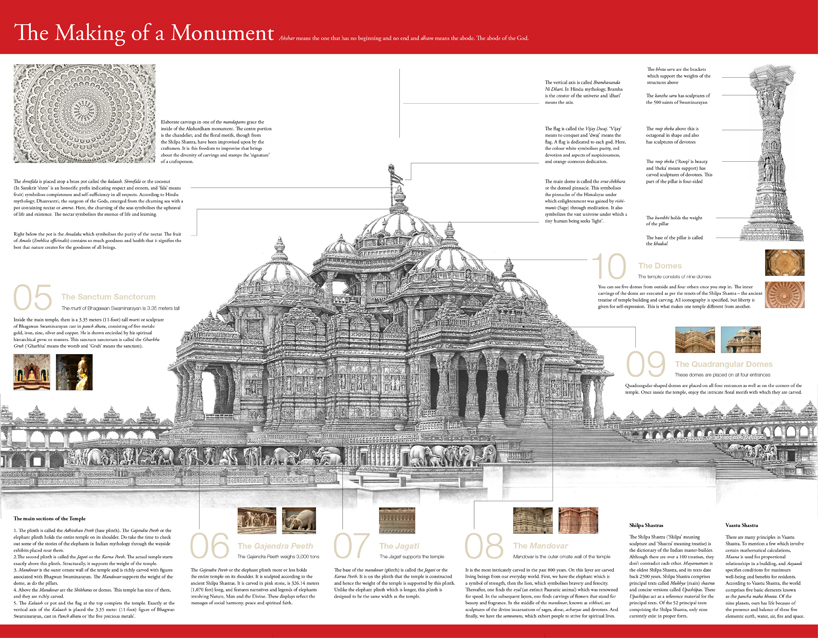 Roadside Guide 17″ x 22″ (back) for interpreting the Akshardham Monument. Folds down into a third and is easy to navigate and carry. The back interprets the monument itself.
Roadside Guide 17″ x 22″ (back) for interpreting the Akshardham Monument. Folds down into a third and is easy to navigate and carry. The back interprets the monument itself.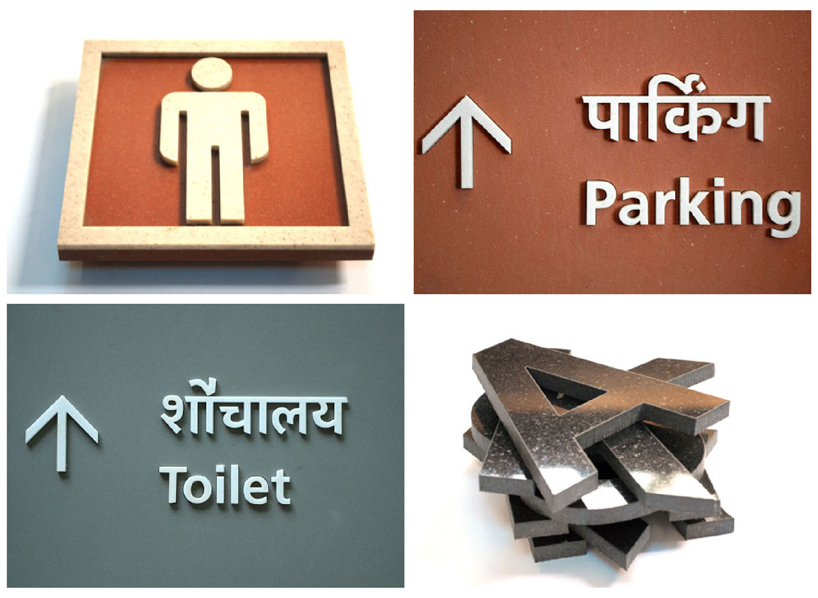 Over 50 samples were made using durable material and techniques to arrive at the final decision of signage for the site.
Over 50 samples were made using durable material and techniques to arrive at the final decision of signage for the site.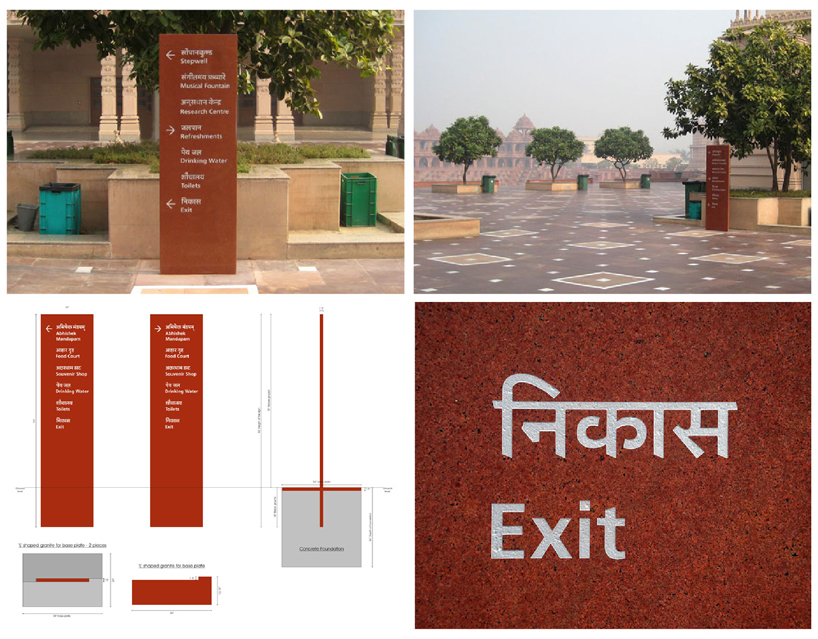 The directional signs on the site are vandal proof, weather proof, durable and pay respect to the surrounding. It stand at eight feet and is made of ruby red granite.
The directional signs on the site are vandal proof, weather proof, durable and pay respect to the surrounding. It stand at eight feet and is made of ruby red granite.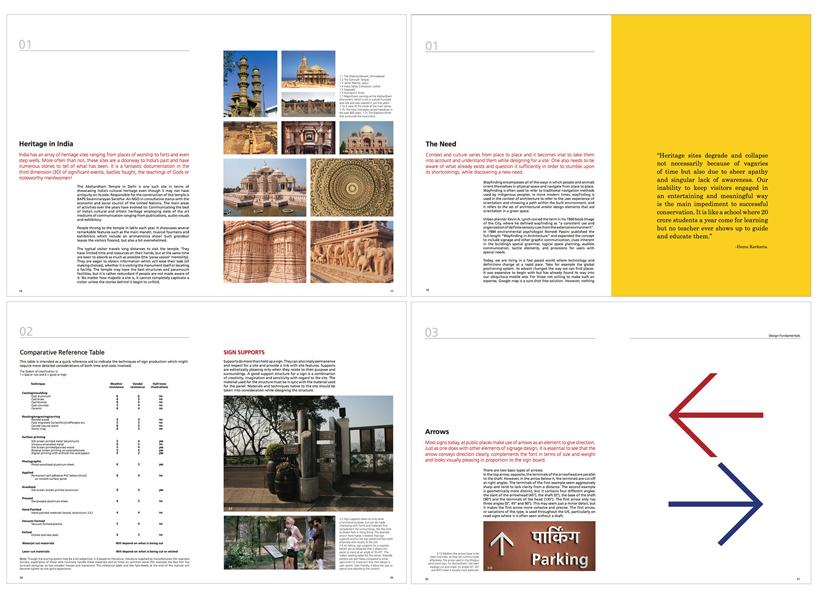 The sampling and prototyping gave birth to a Sign Manual covering all aspects from fonts and arrows, to fixtures, materials and techniques. This was developed to aid people who take on wayfinding projects for our heritage sites.
The sampling and prototyping gave birth to a Sign Manual covering all aspects from fonts and arrows, to fixtures, materials and techniques. This was developed to aid people who take on wayfinding projects for our heritage sites.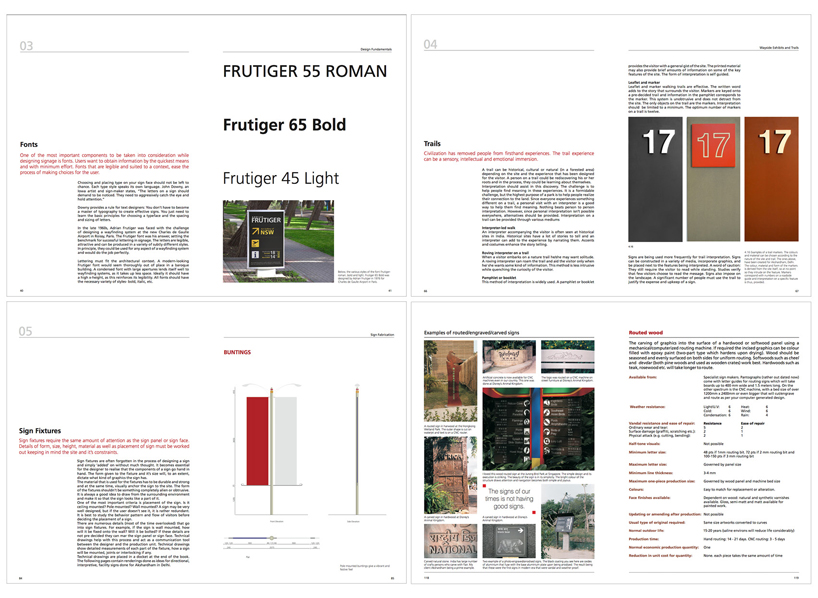 The sampling and prototyping gave birth to a Sign Manual covering all aspects from fonts and arrows, to fixtures, materials and techniques. This was developed to aid people who take on wayfinding projects for our heritage sites.
The sampling and prototyping gave birth to a Sign Manual covering all aspects from fonts and arrows, to fixtures, materials and techniques. This was developed to aid people who take on wayfinding projects for our heritage sites.